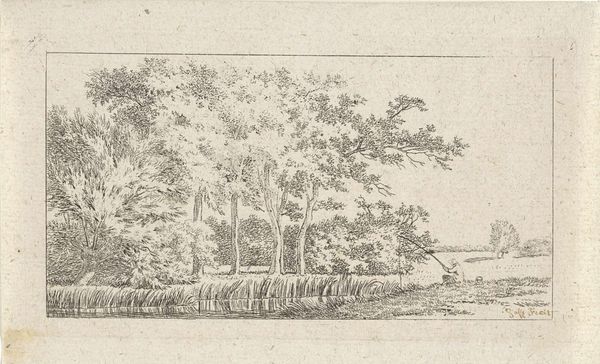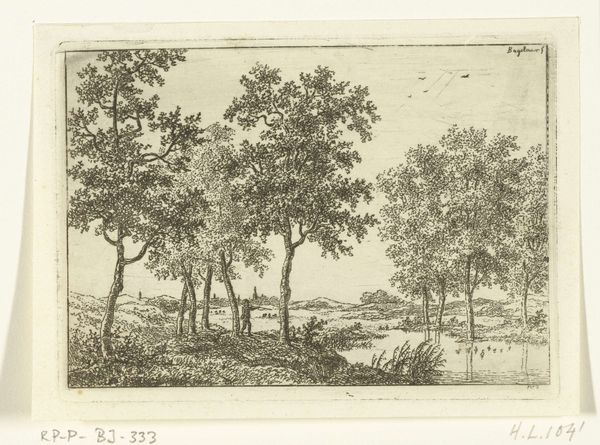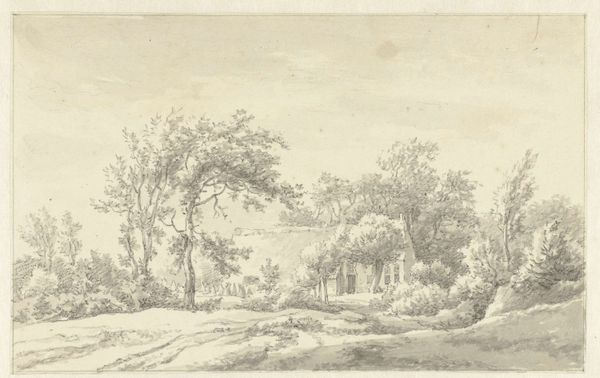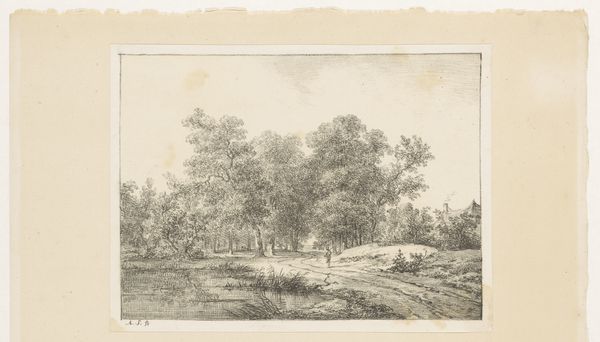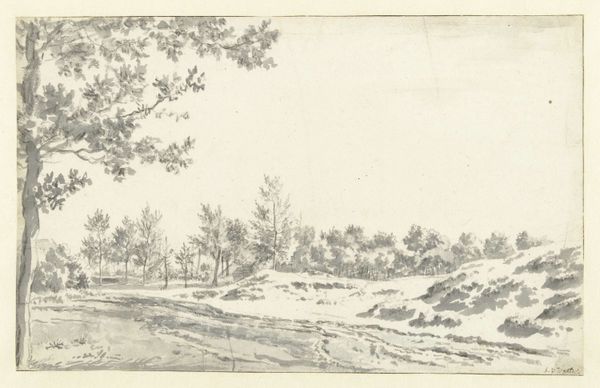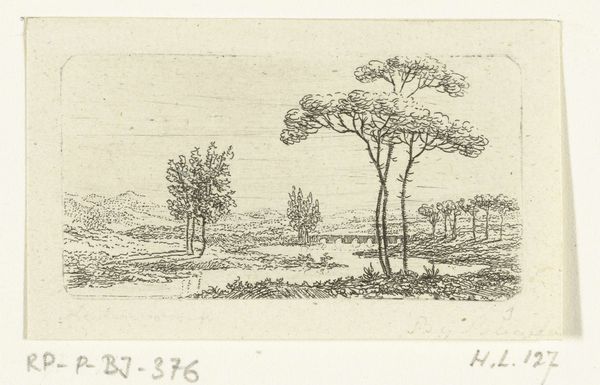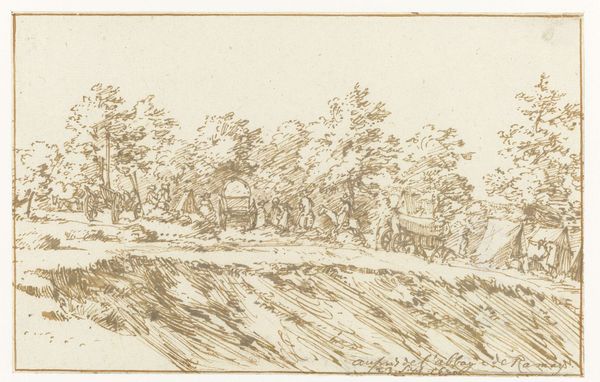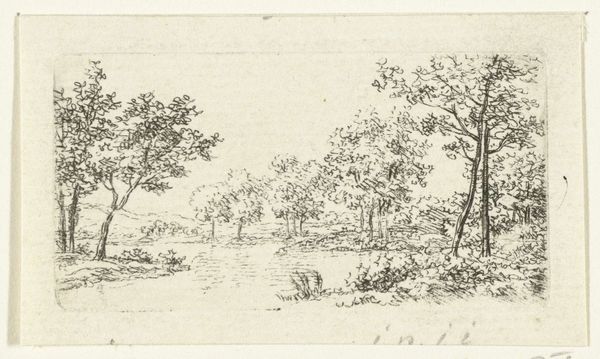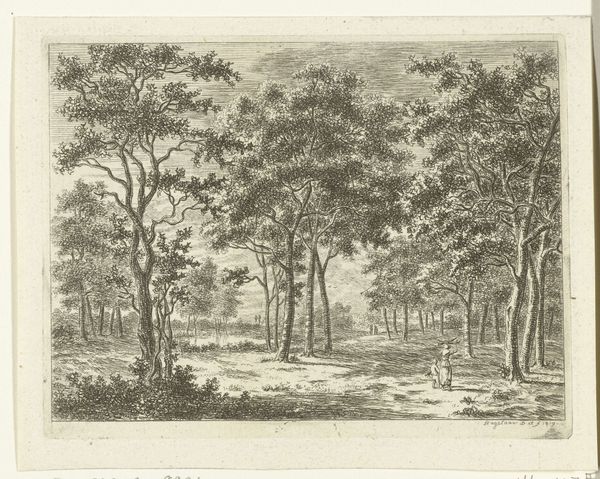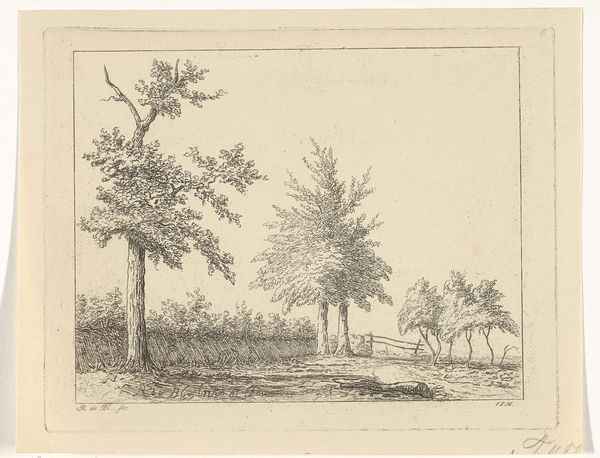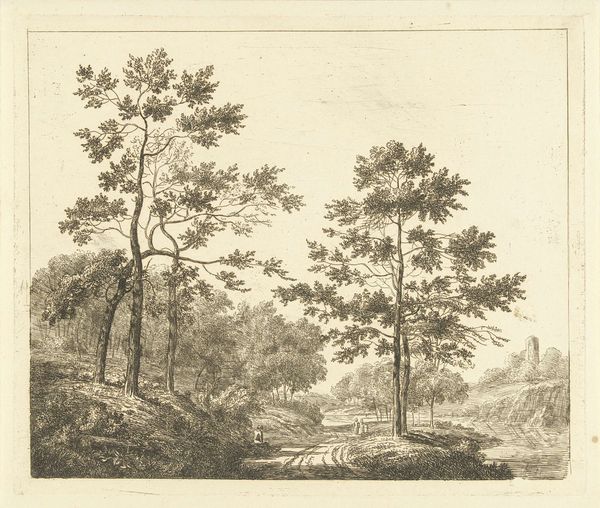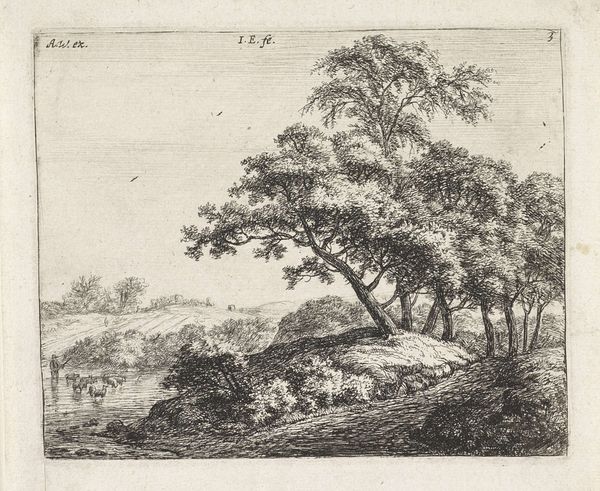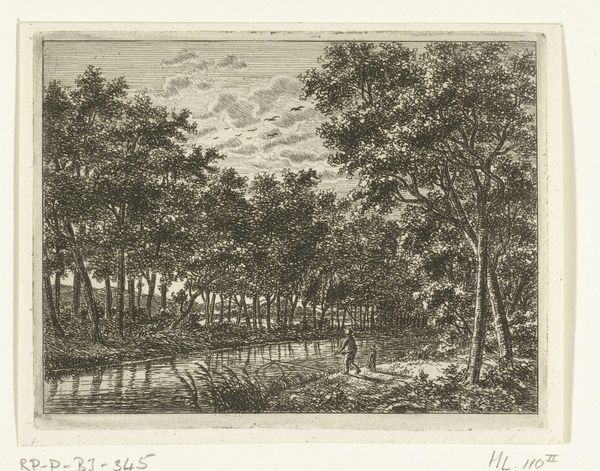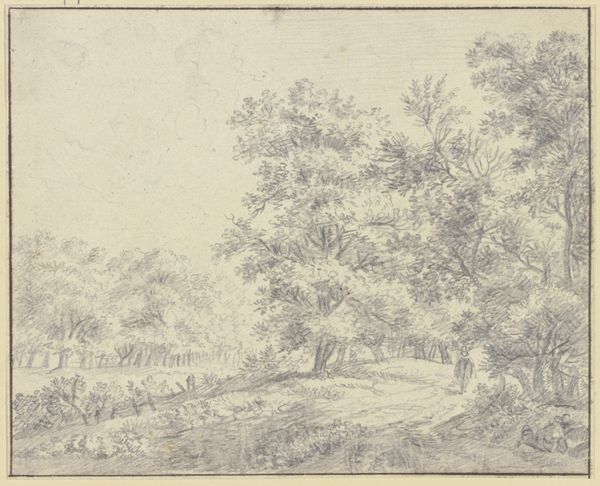
#
light pencil work
#
quirky sketch
#
pencil sketch
#
old engraving style
#
personal sketchbook
#
sketchwork
#
pen-ink sketch
#
pen work
#
sketchbook drawing
#
initial sketch
Dimensions: height 137 mm, width 213 mm
Copyright: Rijks Museum: Open Domain
Jan de Beijer made this drawing of Driebergen village with pen in grey ink in 1760. It gives us an insight into the cultural perception of the Dutch landscape during the 18th century. Drawings like this were made for wealthy landowners, part of a fashion for picturesque views of country estates. During the 18th century, the Dutch elite, enriched by trade and colonialism, invested heavily in land and country houses. Artists like De Beijer found a ready market for topographical views, which served to legitimize the elite’s claims to land ownership by representing the landscape as an aesthetic object. Note the church spire and the trees, arranged to frame the scene according to established artistic conventions. To fully understand a drawing like this, historians need to consult estate records, travel journals, and other visual sources. In doing so, we can better understand the social relations that shaped artistic production.
Comments
No comments
Be the first to comment and join the conversation on the ultimate creative platform.
